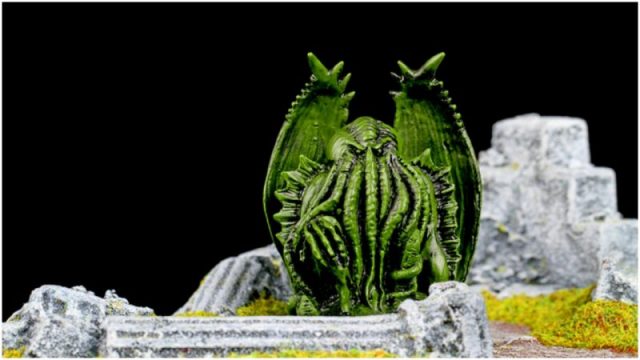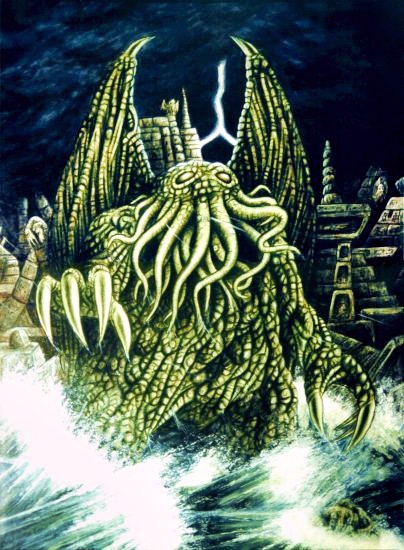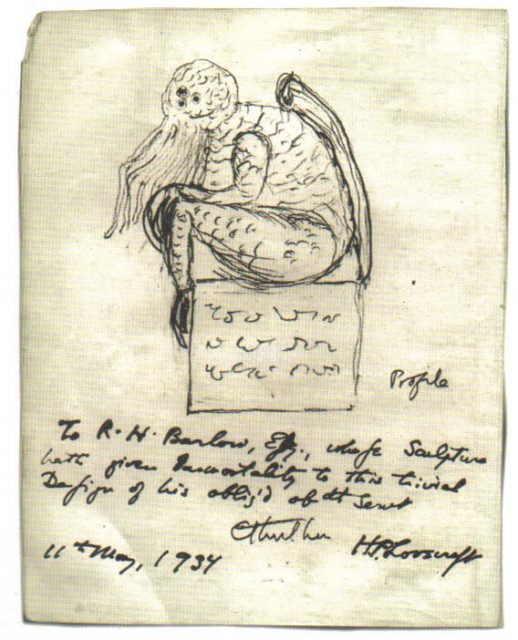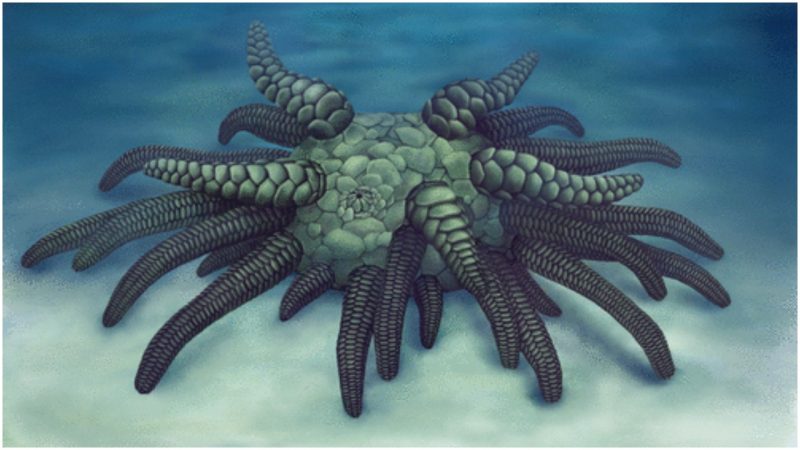H.P. Lovecraft was an author whose written works could provoke nightmares in the staunchest, most rational mind. Even author Stephen King credits Lovecraft as a source of inspiration for his many tales of horror, suspense, and science fiction-tinged fantasy. So when scientists recently discovered the fossil of a creepy creature they believe may have had as many as 45 tentacles, they aptly named it Sollasina Cthulhu, after the famous sea monster Lovecraft created in his novel, Call of Cthulhu.
Creepy, scary creatures are a staple of horror and science fiction, but they are usually massive things, capable of knocking over buildings (like Godzilla) or attacking a town’s population (like King Kong, or the Blob.) But Sollasina Cthulhu is not a massive monster; creepy, yes; frightening – most definitely – but it’s only about three centimeters in size.

It’s a 430 million-year-old fossil that’s a kind of brand new, never before seen sea cucumber. The fossil belongs to an extinct group known as ophiocistoids. Scientists found this little guy very well preserved in a site off the coast of Herefordshire, England.
Researchers say the deposit, formally known as the Silurian Herefordshire Lagerstatte, is particularly rich in fossils and that creatures there are astonishingly complete. It was formed from a combination of fine volcanic ash and carbonate mud that created perfect conditions for the preservation of delicate soft-bodied creatures. It is a particularly popular place in which scientists of many disciplines love to work, and the finds are so often surprising and rewarding.
Scientists have created a 3D digital reconstruction of Sollasina which, according to Daily Mail, reveals a creature with 45 tentacles. The tentacles are each like small “mouths,” and they helped attach the creature to the ocean floor. Newsweek explains the process, called serial grinding, used to “see” the creature. The reconstruction was created by an extremely slow and careful process of grinding away infinitesimal parts of the fossil and photographing it each time. Those photographs are then fed to a computer that creates the digital composite.

Dr. Jeffrey Thompson, co-author of the study that looked at Sollasina, recently told the Daily Mail that they performed several tests to see if the new creature was closer to a sea urchin or a sea cucumber. Surprisingly, Sollasina was found to be more an ancient sea cucumber, which helps scientists better understand evolution of creatures that eventually developed into the slug-like cucumbers of today.
According to The Royal Society, the discovery was particularly important because it is unusually well-preserved and shows internal soft tissue that hasn’t been seen before. This soft tissue is helping scientists bridge the gap between echinoids, such as sea urchins, and holothurians, such as sea cucumbers.
Lovecraft, now granted additional fame by having a new, if extinct, creature named from his work, was considered by many to be the best writer of his genre, but notoriety was fleeting. When he passed away in 1937, he was almost broke. Still, his reputation, particularly among other authors like Stephen King, remains undiminished.

Quoted on American Heritage, King once said of Lovecraft, “Now that time has given us some perspective on his work, I think it is beyond doubt that H.P. Lovecraft has yet to be surpassed as the 20th century’s greatest practitioner of the classic horror tale.” That’s high praise coming from the man who is also considered one of the greatest horror fiction authors not just of the 20th century, but of all time.
Read another story from us: Fossil Found of Ancient Four-Legged Whale that Could Walk on Land
Still, King doesn’t have a creepy little sea critter named after one of his creations, at least not yet. Now, Lovecraft does. It’s a worthy tribute to a man whose mind invented dark tales and entire universes comprised of creatures just like his namesake.
